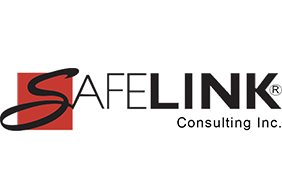Workplace violence is a serious concern for businesses across the United States, posing significant risks to employees' safety and well-being. While California's new Senate Bill 553 (SB 553) highlights the importance of proactive measures, the need for a comprehensive Emergency Action Plan (EAP) that includes workplace violence prevention is universal.
Alarming Statistics:
Workplace violence is a serious issue that plagues businesses across the United States, ranking as the second leading cause of fatal occupational injuries. Shockingly, nearly 2 million American workers are subjected to violence in their workplaces every year. This alarming statistic underscores the urgent need for comprehensive measures to address and prevent workplace violence, ensuring the safety and well-being of all employees.
California's New Workplace Violence Prevention Law: SB 553
Recognizing the need for enhanced protections, California recently passed Senate Bill 553 (SB 553), which introduces new requirements for preventing workplace violence. This law, signed on September 30, 2023, mandates that most employers in California implement a Workplace Violence Prevention Plan (WVPP) starting July 1, 2024. Employers should familiarize themselves with all the requirements of SB 553 to ensure compliance and safeguard their employees. This involves regularly reviewing and updating the WVPP, maintaining proper records, and providing ongoing training to employees.
California’s SB 553 is a significant step forward in protecting employees from workplace violence. By implementing a thorough Workplace Violence Prevention Plan, employers can create safer work environments and reduce the risk of violent incidents. Understanding and adhering to these new requirements is essential for all California employers to ensure the well-being of their workforce.
The Workplace Violence Prevention for Health Care and Social Service Workers Act
The Workplace Violence Prevention for Health Care and Social Service Workers Act was first introduced to Congress in 2021 by Representative Joe Courtney of Connecticut. This bill requires OSHA to issue a standard on workplace violence prevention in health care and other sectors. The Act will require employers to develop and implement a comprehensive workplace violence prevention plan. The plan would include procedures for identifying and reporting incidents of workplace violence, training for employees on how to prevent and respond to violent incidents, and measures to mitigate the risk of violence, such as installing security cameras or panic buttons.
The Importance of an Emergency Action Plan
An Emergency Action Plan is a documented plan that outlines the procedures to follow during various emergencies, including fires, natural disasters, and workplace violence incidents. Every business, regardless of location, should prioritize creating and maintaining an effective EAP to protect their workforce. A well-crafted EAP is essential because it:
- Protects Employees: The primary goal is to ensure the safety and security of all employees.
- Reduces Liability: Implementing an EAP can help minimize legal liabilities and potential lawsuits.
- Ensures Compliance: Many states have regulations requiring specific emergency preparedness measures.
- Promotes a Safe Work Environment: A robust EAP fosters a culture of safety, boosting employee morale and productivity.
It’s unfortunate that employers are faced with workplace violence incidents, but it is a reality that must be dealt with to keep employees safe. Workplace safety must become a priority because all workers deserve to feel safe and secure at work. By requiring facilities to develop and implement comprehensive workplace violence prevention plans, we can create a safer environment for all.
Workplace violence is a significant threat that requires careful planning and proactive measures. While California's SB 553 sets a strong example, businesses nationwide must recognize the importance of incorporating workplace violence prevention into their Emergency Action Plans. By doing so, companies can protect their employees, reduce liabilities, and promote a culture of safety. Prioritizing a robust EAP is not just a regulatory requirement but a moral imperative to ensure the well-being of everyone in the workplace.
By implementing workplace violence prevention programs, you can provide a safe and secure environment for both your patients and staff. Don't wait until it's too late - take proactive measures to protect your workplace today. Learn more - Protecting Workers From an Active Shooter
Develop an Emergency Action Plan - Get a free Emergency Action Plan Checklist
Need help writing a workplace violence policy? Contact us.
Learn more about Dental OSHA Compliance.
Learn more about what SafeLink Consulting can do to help your business with compliance services, including safety compliance, to meet OSHA training requirements and quality system consulting to meet FDA compliance. SafeLink Consulting assists businesses with workplace safety training, infection control training, HIPAA training online, quality systems, assessments, audits, due diligence, and more.
Learn more about OSHA's General Duty clause.







Leave Comment